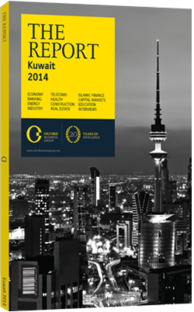OBG talks to Faisal Sarkhou, CEO, KIPCO Asset Management Company

Interview: Faisal Sarkhou
How do you assess the current appetite for (Islamic bonds), and how key are they to reducing capital flight and increasing market liquidity?
FAISAL SARKHOU: The market for sukuk in the GCC is expected to surpass previous levels as capital market regulators across the Gulf try to increase the breadth and efficiency of financial markets. Furthermore, as GCC economies continue to push infrastructure projects, governments, corporations and banks will be increasingly encouraged to tap these underutilised instruments. One key factor limiting the growth of Islamic products is that they are fragmented and lack common standards. The market still needs to evolve, especially the regulations governing such products, which will help instil confidence in investors. New products are also needed, as well as an efficient secondary market, which would help provide instant and sustained liquidity.
How developed is the local debt market, and what can be done to encourage more businesses to use it as a source of financing?
SARKHOU: The debt market in Kuwait has become thin and limited to only traditional forms of issuance, and it does not have the highly structured and tailored financial products seen in advanced markets. The most favoured form of funding is still bank financing, which largely depends on the relationship between the bank and the borrowers. One key reason for the slow growth in debt issuances, in Kuwait as well as in the GCC, is that the region’s sovereign debt markets are relatively underdeveloped. This is because stable oil prices have lead to strong fiscal surpluses. Sovereign issuances help set the yield curve, which is essential for any debt market. Qatar is leading efforts on this front by issuing Islamic government bonds. Governments can also advance the development of local debt markets by promoting a culture of saving among nationals and residents. They can do this by pushing for appropriate debt-to-equity structures in their projects, and by creating an environment that increases liquidity on secondary markets.
Interest rates in the GCC are lower than in other developing markets, making the debt market a viable financing option for businesses. To encourage firms to use it, they must be made aware of local laws on debt issuance, of the overall debt market and of its benefits over equity funding. Companies need better understanding about how to strike the right balance between debt and equity so as to reduce the cost of financing.
What steps are being taken to nurture the equity market as a way for local firms to raise capital?
SARKHOU: All participants in the GCC equity markets are working to build robust financial markets. Regulations are stronger and evolving, even at the sector level. The formation of the Capital Markets Authority in Kuwait and the imposition of strict rules to avoid insider trading and speculation have done much to build investor confidence. One sign of development is the elevation of the UAE and Qatar from frontier to emerging market status, a change that has drawn new attention from foreign investors to those markets and to other frontier markets such as Kuwait. Qatar and Dubai aim to establish hubs for Islamic finance. All the same, more development is needed, especially in the Kuwaiti market, which is one of the most fiscally sound in the region and offers ample opportunities to investors in real estate, infrastructure and consumer goods.
In what ways is financial innovation important for addressing the country’s low savings rate? Are new products needed to target a wider population?
SARKHOU: A number of new products are being developed that cater especially to the needs of investors in the GCC. Islamic financing is one of the most important ways to mobilise funds in the region. A number of international banks are now offering Islamic banking products that cover personal banking and home financing, as well as business and corporate services. Such instruments can provide access to untapped funds, and can be of great help as a source of development.
You have reached the limit of premium articles you can view for free.
Choose from the options below to purchase print or digital editions of our Reports. You can also purchase a website subscription giving you unlimited access to all of our Reports online for 12 months.
If you have already purchased this Report or have a website subscription, please login to continue.

